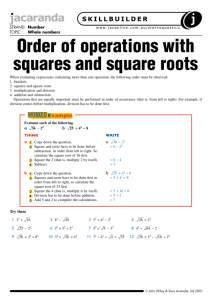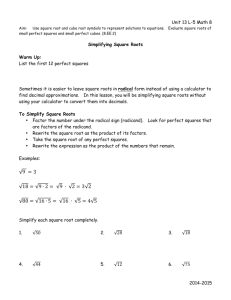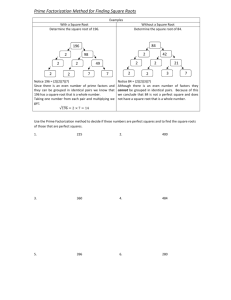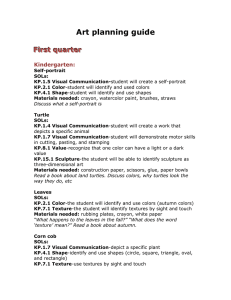Simplifying Square Roots
advertisement
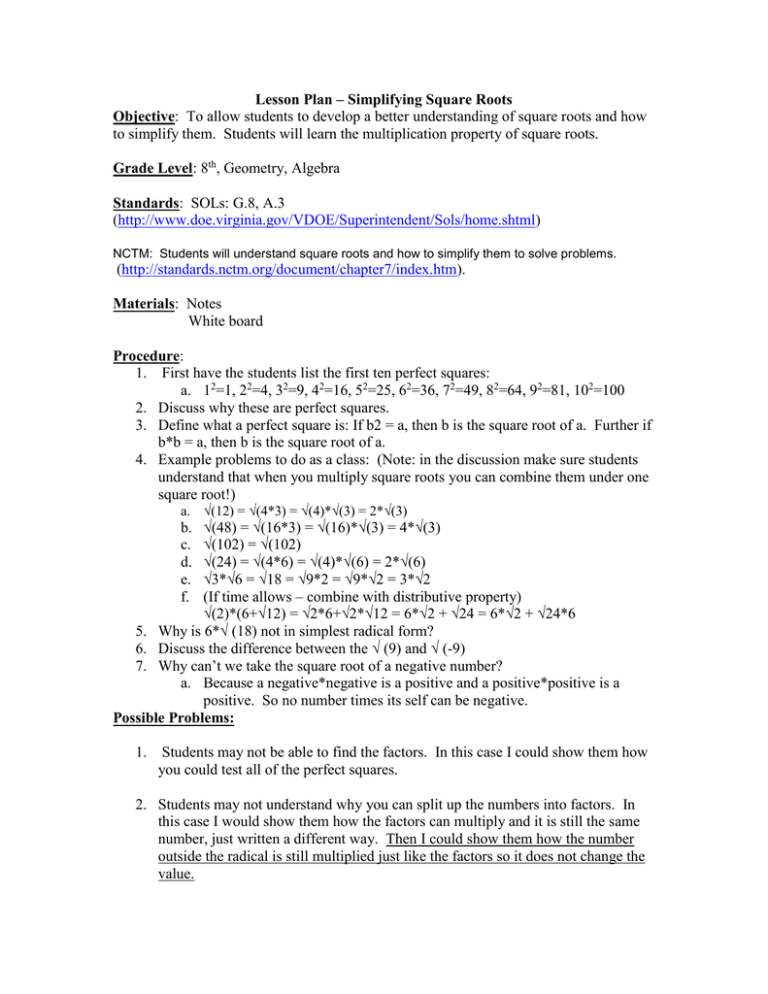
Lesson Plan – Simplifying Square Roots Objective: To allow students to develop a better understanding of square roots and how to simplify them. Students will learn the multiplication property of square roots. Grade Level: 8th, Geometry, Algebra Standards: SOLs: G.8, A.3 (http://www.doe.virginia.gov/VDOE/Superintendent/Sols/home.shtml) NCTM: Students will understand square roots and how to simplify them to solve problems. (http://standards.nctm.org/document/chapter7/index.htm). Materials: Notes White board Procedure: 1. First have the students list the first ten perfect squares: a. 12=1, 22=4, 32=9, 42=16, 52=25, 62=36, 72=49, 82=64, 92=81, 102=100 2. Discuss why these are perfect squares. 3. Define what a perfect square is: If b2 = a, then b is the square root of a. Further if b*b = a, then b is the square root of a. 4. Example problems to do as a class: (Note: in the discussion make sure students understand that when you multiply square roots you can combine them under one square root!) a. √(12) = √(4*3) = √(4)*√(3) = 2*√(3) √(48) = √(16*3) = √(16)*√(3) = 4*√(3) √(102) = √(102) √(24) = √(4*6) = √(4)*√(6) = 2*√(6) √3*√6 = √18 = √9*2 = √9*√2 = 3*√2 (If time allows – combine with distributive property) √(2)*(6+√12) = √2*6+√2*√12 = 6*√2 + √24 = 6*√2 + √24*6 5. Why is 6*√ (18) not in simplest radical form? 6. Discuss the difference between the √ (9) and √ (-9) 7. Why can’t we take the square root of a negative number? a. Because a negative*negative is a positive and a positive*positive is a positive. So no number times its self can be negative. Possible Problems: b. c. d. e. f. 1. Students may not be able to find the factors. In this case I could show them how you could test all of the perfect squares. 2. Students may not understand why you can split up the numbers into factors. In this case I would show them how the factors can multiply and it is still the same number, just written a different way. Then I could show them how the number outside the radical is still multiplied just like the factors so it does not change the value. Sources: "Standards for Grades 9 - 12." Principles & Standards for School Mathematics. 2004. National Council of Teachers of Mathematics. 21 Feb 2009 <http://standards.nctm.org/document/chapter7/index.htm>. "Standards of Learning Currently in Effect ." Standards of Learning. Virginia Department of Education. 21 Feb 2009 <http://www.doe.virginia.gov/VDOE/Superintendent/Sols/home.shtml>.

